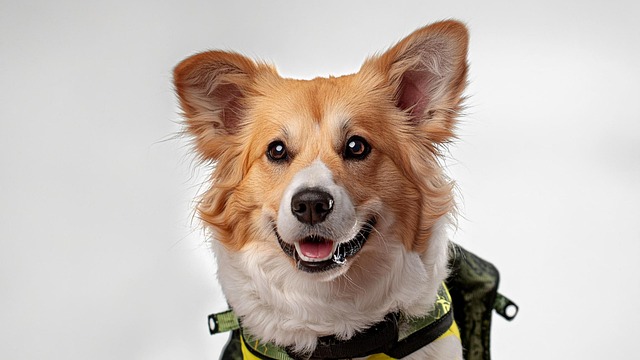
At what age do dogs get food allergies?
When we stroke our fluffy beloved dogs and watch them wagging their tails while enjoying their food, we rarely think that seemingly ordinary food can be an "invisible killer" that harms them.
In the streets and alleys of the UK, one can always see the warm scene of pet owners strolling leisurely with their dogs. However, for some dog-owning families, the originally relaxed and pleasant walking time is overshadowed by their dogs suffering from hip dysplasia. Watching their once lively and energetic beloved dogs now limping while walking and even having difficulty getting up, the anxiety and pain can only be deeply felt by those who have experienced it. Hip dysplasia is a genetic disease commonly found in medium and large dogs. In the UK, with the continuous progress of pet medical technology, the treatment methods for this condition are constantly optimized, bringing new hope to the sick dogs.
The essence of hip dysplasia is the abnormal development of the dog's hip joint during its growth. Under normal circumstances, the hip joint is composed of the acetabulum and the femoral head, and the two are like precisely fitting gears, supporting the dog's daily activities. But for sick dogs, the acetabulum cannot completely cover the femoral head, resulting in joint instability. Long-term wear and tear will cause pain and inflammation, and in severe cases, it can even lead to lameness and muscle atrophy. In the UK, dog breeds such as Labrador Retrievers, Golden Retrievers, and German Shepherds have a relatively high incidence of this disease, which is closely related to their genetic characteristics. Many British pet owners regularly take their dogs for hip joint examinations when they are young, hoping to detect the problem early and intervene in a timely manner.
In the UK, early diagnosis is crucial for the treatment of hip dysplasia. Veterinarians usually use X-ray examinations to observe the shape and development of the hip joint through clear images. In recent years, some advanced pet hospitals have also introduced computerized tomography (CT) and magnetic resonance imaging (MRI) technologies. These high-precision examination methods can more carefully detect the damage to joint cartilage, ligaments and other soft tissues, providing a more accurate basis for the formulation of subsequent treatment plans. Many British pet owners said that when they learned that their dogs were sick, they felt full of self-blame and regret, as if their negligence had made their beloved dogs suffer from the illness. But veterinarians will always patiently comfort them, emphasizing the importance of early detection and encouraging the owners to face the treatment actively.
For different stages of the disease, British veterinarians will formulate personalized treatment plans. For dogs with mild conditions in the early stage, conservative treatment is a commonly used method. First is weight management. In the UK's pet food market, low-calorie and high-nutrient prescription foods specifically designed for dogs with hip dysplasia are very common. Veterinarians will accurately calculate the daily feeding amount according to the dog's age, weight and activity level to help them maintain a healthy weight and reduce the burden on the hip joint. Physical therapy is also an important part of conservative treatment. In the UK, many pet rehabilitation centers are equipped with professional hydrotherapy pools, allowing dogs to carry out swimming training under the effect of buoyancy, which can exercise muscle strength without putting too much pressure on the joints. In addition, traditional physiotherapy methods such as massage and hot compress are also widely used. Pet therapists use gentle techniques to promote local blood circulation and relieve pain.
When the dog's condition is more serious and conservative treatment is not effective, surgical treatment becomes a necessary choice. The UK has mature technology in the field of hip joint surgical treatment. Total hip replacement (THR) is a relatively advanced and effective surgical method at present. During the surgery, the veterinarian will replace the diseased acetabulum and femoral head with artificial joints to restore the normal function of the hip joint. Although the surgical cost is relatively high, many British pet owners said that as long as they can help their beloved dogs get rid of the illness and run happily again, any amount of effort is worthwhile. Another common surgery is triple pelvic osteotomy (TPLO), which can increase the coverage area of the acetabulum on the femoral head by changing the stress structure of the pelvis, improving joint stability. This surgery is suitable for young and lighter-weight dogs. With postoperative rehabilitation training, most dogs can restore good motor ability.
No matter which treatment method is adopted, postoperative rehabilitation is crucial for sick dogs. In the UK, professional pet rehabilitation therapists will formulate detailed rehabilitation plans for each dog. From restricting activities and wound care in the early postoperative period to gradually increasing low-intensity exercises such as short-distance walking and obstacle training, everything is scientifically designed. Many pet owners will accompany their dogs throughout the rehabilitation training. On the paths in the park, one can often see the owners leading their dogs wearing protective gear and patiently practicing walking step by step. With every bit of progress of the dog, the owners will show a relieved smile on their faces. This persistence and company become a powerful driving force for the dog to overcome the illness.
In addition to medical means, the care of dogs with hip dysplasia in British society is reflected in all aspects. Many animal protection organizations will regularly hold public welfare lectures and invite veterinary experts to popularize disease knowledge for pet owners; pet insurance institutions have also launched targeted insurance products to reduce the economic pressure of treatment for the owners. In the pet community, the owners of sick dogs spontaneously form mutual assistance groups to share treatment experiences and nursing tips. This warm atmosphere makes every family struggling with hip dysplasia no longer feel alone.
The treatment of hip dysplasia in dogs is not only a battle against the disease but also a testament to the deep affection between the owner and the beloved dog. In the UK, advanced medical technology and a humanistic social environment light up the hope of recovery for sick dogs. Every attempt at treatment and every day and night of guardianship are filled with the owner's deep love for the dog. When seeing the dog that has been tortured by the illness wagging its tail happily and running towards the sunshine again, all the efforts and sacrifices turn into the most wonderful rewards. May every dog suffering from hip dysplasia regain health and happiness under the care of love and professionalism.

When we stroke our fluffy beloved dogs and watch them wagging their tails while enjoying their food, we rarely think that seemingly ordinary food can be an "invisible killer" that harms them.

When the fluffy little dog leaves the warm embrace of its mother dog and starts to face the world independently, its ignorant and dependent eyes make every owner feel affectionate.

In the late night pet hospital, under the incandescent light, you watch your dog struggling to move its body, every step accompanied by a slight tremble,

When our furry friends at home scratch frequently, sneeze incessantly, or show symptoms such as diarrhea and ear inflammation, the hearts of every pet owner are gripped with worry.

When you squat down and want to stroke that once fluffy Corgi, your palm gets covered with large amounts of dog hair.

When the furry little golden fur happily falls into your arms, with a faint odor or soil left behind from playing, bathing it becomes a necessary and challenging task.